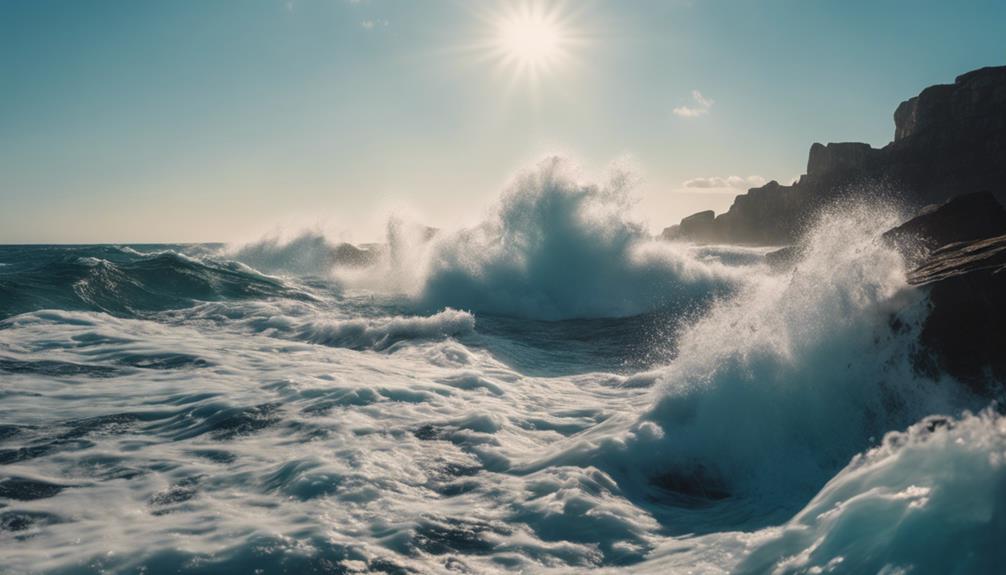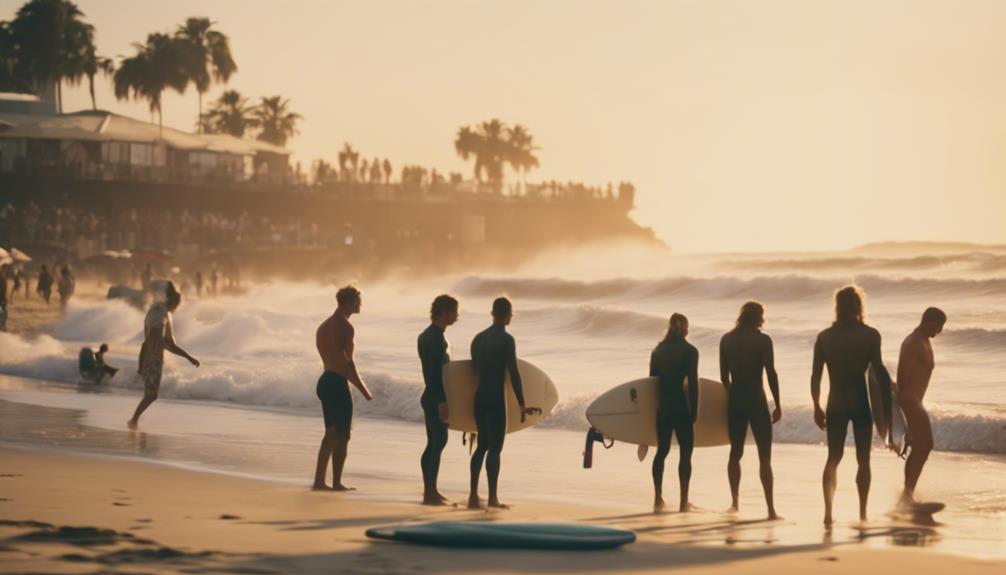Surfing waves are formed when wind energy transfers to the ocean's surface, creating ripples that evolve into swells. Stronger winds and longer fetch distances result in larger, cleaner waves, perfect for surfing. As these waves travel, they interact with the ocean floor, where factors like depth and shape influence how they break. Low-pressure systems play a crucial role by generating sustained winds that enhance wave height and consistency. Understanding the dynamics of waves, including their anatomy, types, and the impact of tides, can greatly improve your surfing experience. There's so much more to uncover about this fascinating phenomenon.
Key Takeaways
- Waves form when wind energy transfers to the ocean's surface, generating ripples that develop into larger waves.
- Stronger winds and longer fetch distances result in higher and more powerful ground swells.
- Low-pressure systems create intense winds, leading to the formation of significant wave patterns.
- As waves travel through deep water, they gain energy and height before breaking in shallower areas.
Wave Formation Basics
Waves form when wind energy transfers to the ocean's surface, creating movement that can lead to surfable conditions. The strength of the wind plays a significant role in wave formation; stronger winds generate larger waves. The distance over which the wind blows, known as fetch, directly impacts the swell size. A longer fetch allows for the development of more substantial ground swells, which are vital for creating those rideable waves you love.
As waves travel, they maintain their energy, forming regularly spaced lines known as swells. These swells can travel long distances from their point of origin, thanks to the persistent wind. Offshore winds can also enhance wave conditions, helping to groom the surface and create clean, surfable waves.
Understanding the characteristics of waves, such as height, wavelength, and period, is essential for predicting surf conditions. Height determines how challenging a wave can be, while wavelength influences how closely waves arrive. The period, or time between waves, affects the rideability of surfable waves. By grasping these basics, you'll be better equipped to catch the perfect wave.
Role of Low-Pressure Systems
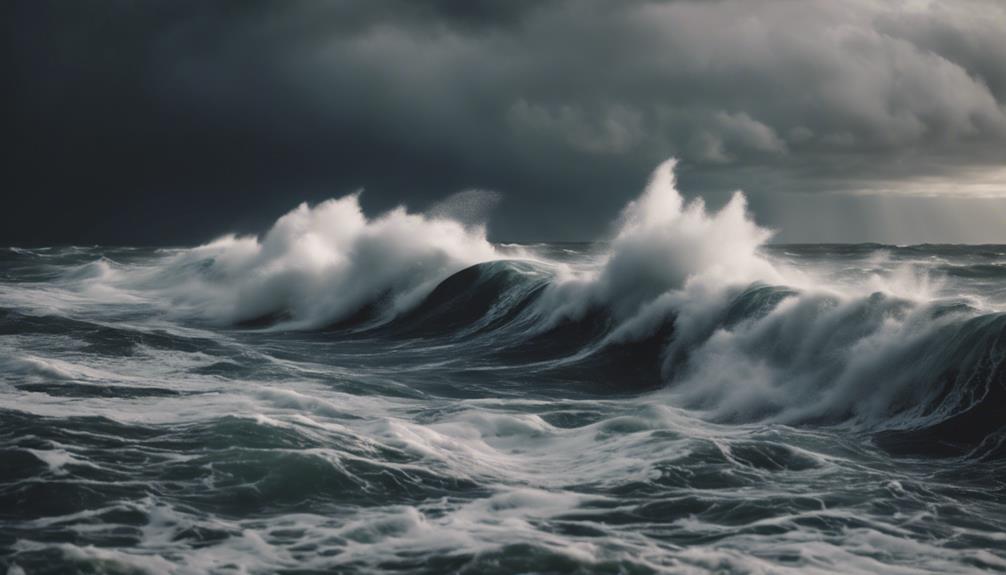
Low-pressure systems play an important role in generating the strong winds necessary for creating large, surfable swells. When these systems form, they greatly increase wind speed over the ocean. This heightened wind activity is vital, as it directly impacts wave energy accumulation. As the strong winds persist over extended periods, they build up powerful ground swells that can travel vast distances.
The expansive area influenced by low-pressure systems means that the resulting waves carry more intensity and energy. As these swells hit the shoreline, you can experience the thrilling power of the ocean. Often, low-pressure systems coincide with stormy weather, which is perfect for surfers seeking ideal conditions. The combination of strong winds and the right swell direction leads to exceptional surfing opportunities.
In essence, low-pressure systems are the backbone of wave formation, providing the necessary conditions for those epic surf days. So, next time you catch a wave, remember the role these systems play in delivering that exhilarating ride. Understanding this connection can enhance your appreciation for the dynamic nature of the ocean and the forces that shape your surfing experience.
Journey of Ocean Waves
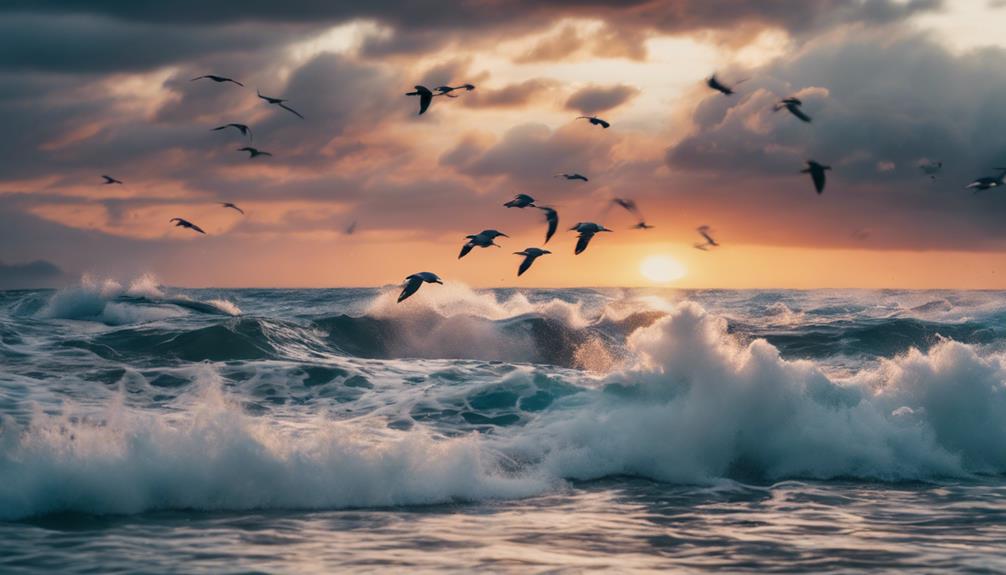
Surfers often appreciate how wind energy from low-pressure systems sets off a remarkable journey for ocean waves that can travel vast distances before reaching the shore. As the wind blows across the ocean, it generates waves that begin a transformative journey. Understanding this journey can enhance your surf experience and help you read the surf report better.
- Wave Generation: The initial wave forms when wind energy transfers to the water surface, creating ripples that grow into larger waves.
- Wave Propagation: These waves travel across open water, with swells often moving thousands of miles before they encounter land.
- Wave Transformation: As waves approach shallower waters, they change dramatically. They slow down, increase in height, and become more rideable, which is essential for surfers.
Throughout this journey, various factors like wind direction, speed, and fetch affect the waves' characteristics. This means every time the wind blows, you can expect unique waves, each with its own story.
Understanding how waves are formed and their journey can deepen your connection with the ocean and enhance your surfing experience.
Impact of Ocean Floor
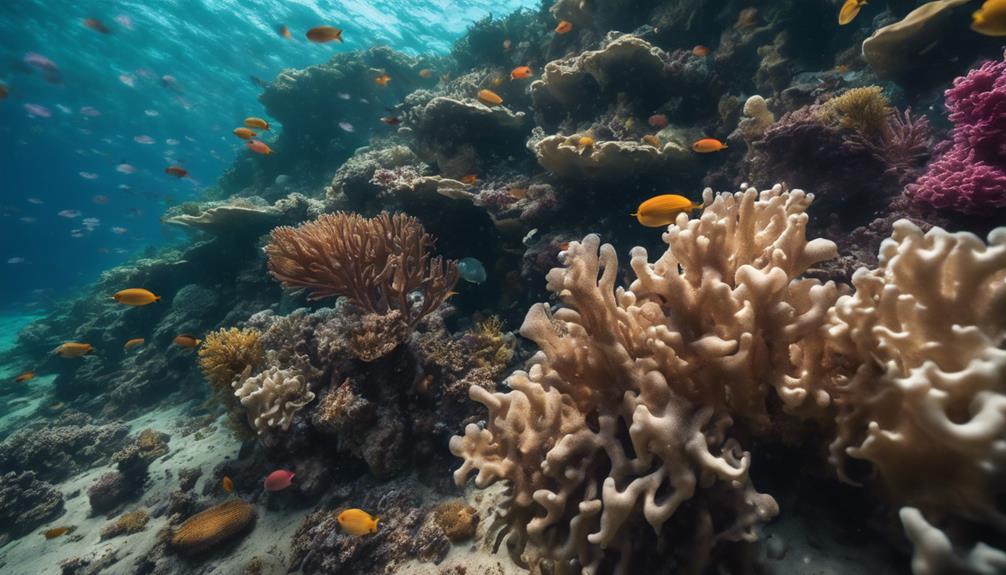
The ocean floor's shape and depth frequently dictate how waves behave as they approach the shore, directly impacting your surfing experience. As waves travel into shallower water, they slow down and increase in height, leading to significant changes in wave breaks. This phenomenon is largely due to bathymetry, the underwater terrain that influences wave speed and direction.
When waves encounter variations in the ocean floor, they can refract, focusing energy and creating larger, more powerful waves in certain areas. Understanding these dynamics allows you to predict which beaches will offer the best conditions for surfing.
Some spots may produce consistent, rideable waves, while others might yield unpredictable, choppy surf. The presence of features like reefs can also create localized wave peaks, enhancing your riding experience.
Sand Banks and Wave Quality
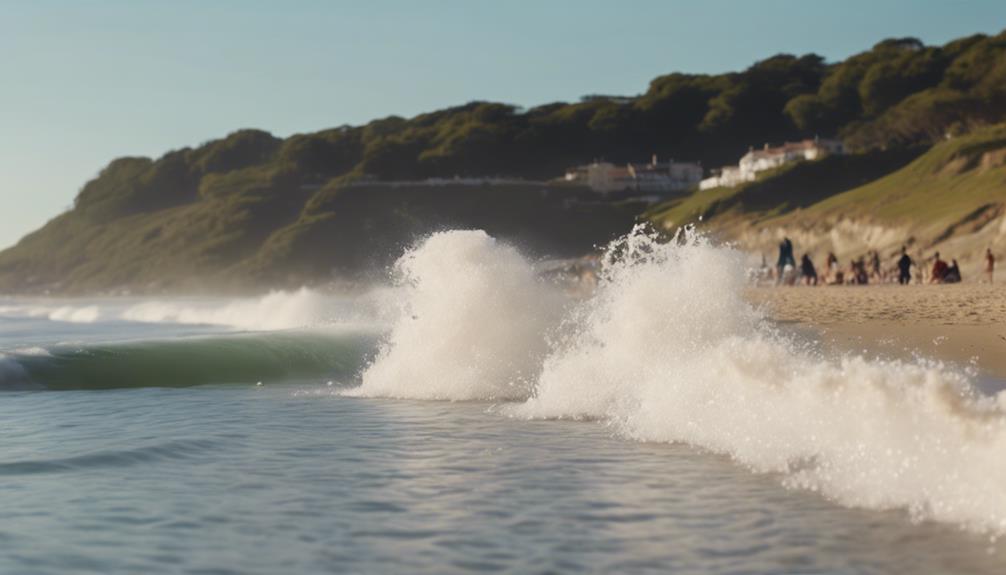
When you hit the beach, the shape of the sandbanks directly influences the quality of the waves you'll ride.
These banks create localized peaks that can enhance your surfing experience, while obstacles like jetties and reefs can modify wave behavior, adding to the excitement.
Understanding how these elements interact helps you choose the best spots for catching those perfect waves.
Sandbanks Influence Wave Peaks
Sandbanks play an essential role in shaping wave quality, as they influence how waves rise and break as they approach the shore. These natural formations create diverse surfing conditions, especially at beach breaks where shallow water meets the ocean. By altering the wave formation, sandbanks lead to unique wave peaks that surfers can take advantage of.
Here are three key ways sandbanks impact wave quality:
- Localized Wave Peaks: Sand ridges can create concentrated areas where waves break more powerfully, offering ideal spots for surfers.
- Dynamic Surf Spots: Newly formed sandbanks can shift the dynamics of a surf spot, generating fresh and exciting wave peaks to ride.
- Variable Conditions: The size and shape of sandbanks can lead to inconsistent wave quality, making some days better for surfing than others.
Understanding the interaction between sandbanks and wave formation is vital for you as a surfer. By recognizing how these elements work together, you can identify the best times and locations to hit the waves.
Obstacles Affect Wave Behavior
Obstacles like jetties and reefs greatly alter wave behavior, shaping the quality and size of the waves you encounter while surfing. These structures can redirect and refract incoming waves, creating unique surf conditions that vary with the tide and wind.
Sandbanks, in particular, play an essential role in this process. They create localized wave peaks, concentrating wave energy in specific areas, which can notably enhance surf quality.
When new sandbanks form, they can lead to fresh surfable wave peaks, giving you exciting new opportunities to ride. However, the interaction between waves and sandbanks can also result in variable wave quality, making certain spots more favorable at different times.
Understanding the geological factors that influence these formations is important for predicting wave conditions and optimizing your riding experience.
Types of Surf Swells
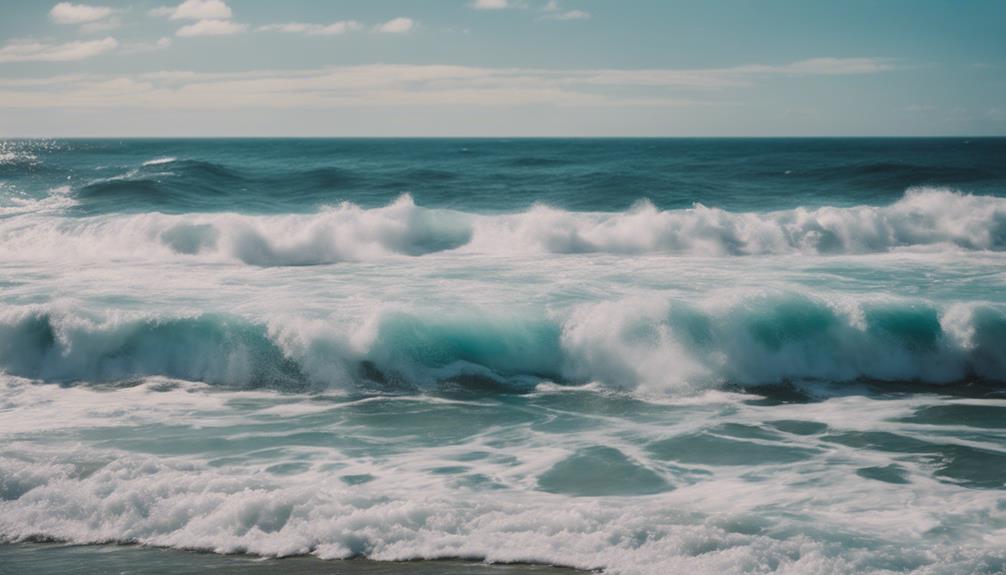
When you're out on the water, understanding the two main types of surf swells—windswell and groundswell—can make all the difference.
Windswell often comes from local winds, creating shorter, choppy waves.
In contrast, groundswell travels long distances, producing powerful and more rideable waves.
Let's break down how these swells form and their unique characteristics to help you choose the best conditions for your next session.
Groundswell Vs. Windswell
Understanding the distinction between groundswell and windswell is essential for any surfer looking to maximize their riding experience. The type of waves formed can greatly impact your session, so knowing the differences will help you choose wisely.
Groundswell: These waves are generated by strong winds over long distances, often from deep ocean storms. They feature longer wavelengths and are less influenced by local winds, making them powerful and consistent for surfing.
Windswell: In contrast, windswell is created by local winds and typically has shorter periods. This results in choppy, less rideable wave conditions that can be unpredictable.
Fetch: The fetch, or the distance over which the wind blows, greatly affects wave size. A longer fetch contributes to larger and more manageable groundswell waves, while a shorter fetch leads to smaller, choppier windswell.
Swell Formation Factors
Surf swells can be broadly classified into wind swells and ground swells, each shaped by different environmental factors that influence their size and rideability.
Wind swells are generated by local winds and typically have shorter periods, making them choppy and less rideable. These swells often arise from lower wind speed and limited fetch, which means they don't have the distance to gain significant energy.
In contrast, ground swells form when winds blow over long fetches, often thousands of miles away, contributing to their strength and organization. The swell formation factors for ground swells include higher wind speed combined with a longer duration of wind, allowing them to build considerable wave height. This results in cleaner, more powerful waves that can travel great distances while maintaining their energy and structure.
Understanding these differences is essential for surfers, as the type of swell affects your approach to catching waves. By recognizing whether you're dealing with wind swells or ground swells, you can better anticipate the conditions and position yourself for the best ride.
Wave Characteristics Explained
Recognizing the differences in wave characteristics between wind swells and ground swells will help you make better choices when hitting the water. Understanding these types of surf swells is essential for maximizing your surf experience.
- Wind Swells: Generated by local winds, these swells typically have shorter periods and lead to choppy, less organized waves. They're great for quick sessions but often lack the consistency you might seek.
- Ground Swells: Formed from distant storms, ground swells are characterized by longer periods and greater power. They provide smoother, more consistent waves, which generally lead to higher surf quality and a more enjoyable ride.
- Factors Influencing Surf Quality: The quality of swells is influenced by wind strength, wind duration, and fetch. Longer fetches produce larger and more powerful ground swells, making them ideal for surfers looking for high wave height and excellent conditions.
Wave Anatomy and Break Types
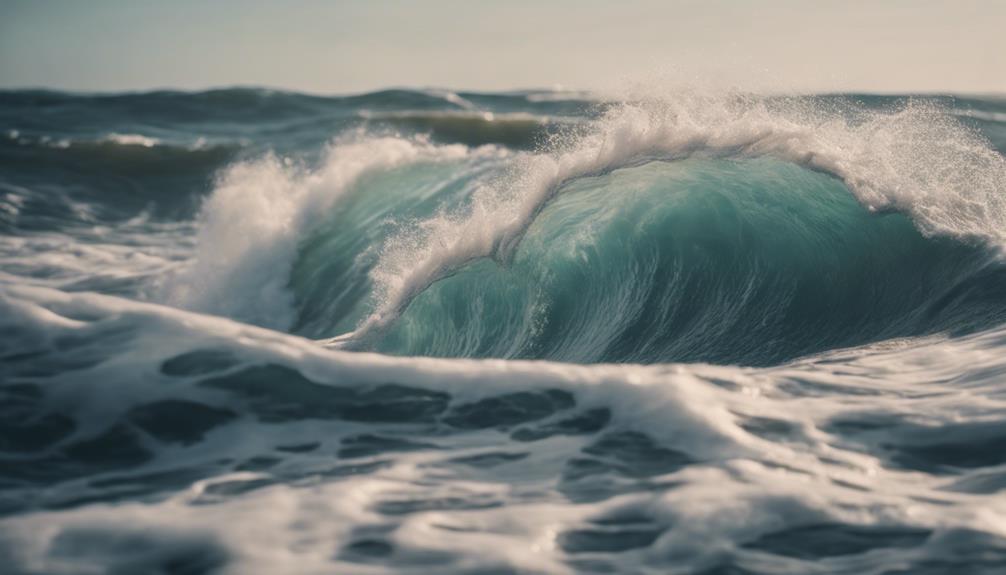
Waves consist of a crest, trough, and wavelength, each playing an important role in shaping how surfers experience the ocean. Understanding wave anatomy helps you anticipate how waves will behave as they approach the shore. In shallow water, waves slow down and increase in height, leading to the exhilarating surf breaks you love.
There are four main types of surf breaks: beach breaks, reef breaks, point breaks, and rivermouth breaks. Each type offers unique riding experiences, influenced by the underwater topography known as bathymetry. For instance, reef breaks often provide powerful, hollow waves, while beach breaks can vary greatly depending on sandbar formations.
Wave direction is another vital factor. Right-hand waves break from left to right, while left-hand waves do the opposite. This impacts your positioning and riding strategy on the wave face. By understanding these elements, you can better navigate and enjoy the waves, maximizing your time in the water.
Influence of Tides on Surfing
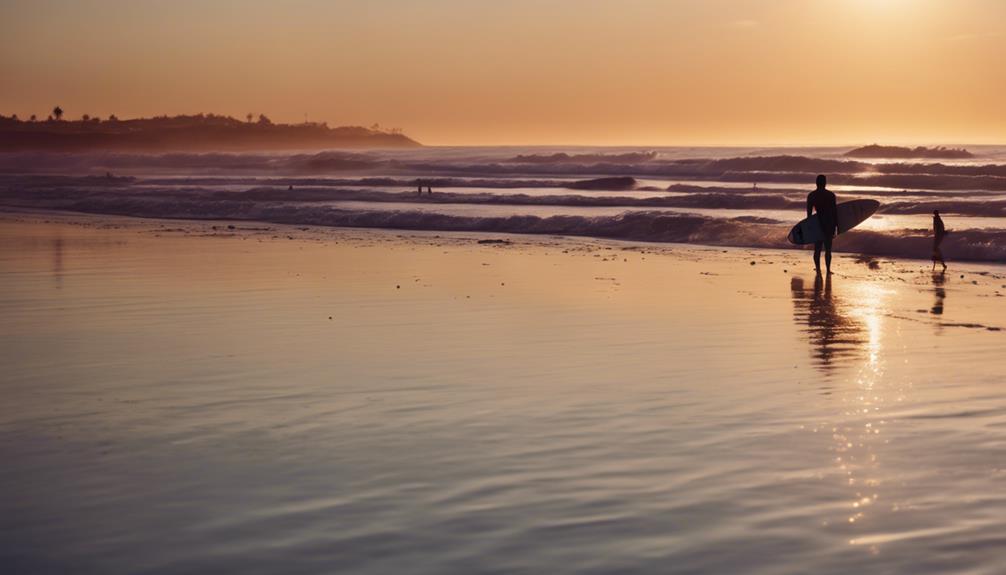
Tides play an essential role in shaping your surfing experience by influencing wave height and steepness. The gravitational pull of the moon and sun creates tidal phases that can dramatically alter surf conditions.
Here's what you need to keep in mind:
- Shallow Water Effects: During low tides, waves often break steeper in shallow water, which can lead to more thrilling rides but also increased risk.
- Incoming Tides: These can enhance wave momentum, making the waves larger and more powerful as they push forward. Catching these waves provides a ride that's hard to beat.
- Optimal Surfing Times: Understanding specific tidal phases for your favorite surf spots is vital. Some breaks are only surfable during certain tides, so timing your sessions can make all the difference in wave quality.
Frequently Asked Questions
How Are Surfing Waves Formed?
You'll find surfing waves form when wind interacts with the ocean surface, creating energy. Factors like wind speed, fetch, and underwater topography influence how waves develop and ultimately break, shaping your surfing experience.
How Do Waves Form in Deep Sea?
Imagine a painter's brush sweeping across a canvas; that's how waves form in the deep sea. As wind dances over vast waters, it creates ripples that grow into powerful waves, shaped by fetch and wind speed.
What Causes Huge Surfing Waves?
Huge surfing waves are caused by strong winds over large ocean areas, combined with long fetches. Underwater features and coastal bathymetry also play a vital role in amplifying wave size and power as they approach the shore.
Do All Waves Created in the Deep Ocean Make It to Shore?
Not every wave from the deep ocean makes it to shore; some vanish like magic. Factors like friction, seabed conditions, and local winds can sap their energy, leaving you with less-than-stellar surf days.
Conclusion
To conclude, understanding how waves form can elevate your surfing experience.
Did you know that waves can travel over 1,000 miles across the ocean before reaching the shore? This journey shapes their size and power, impacting your ride.
Whether you're catching a swell or waiting for the perfect break, recognizing the factors at play will enhance your time in the water.
So next time you're out there, remember the incredible journey your waves have taken!

